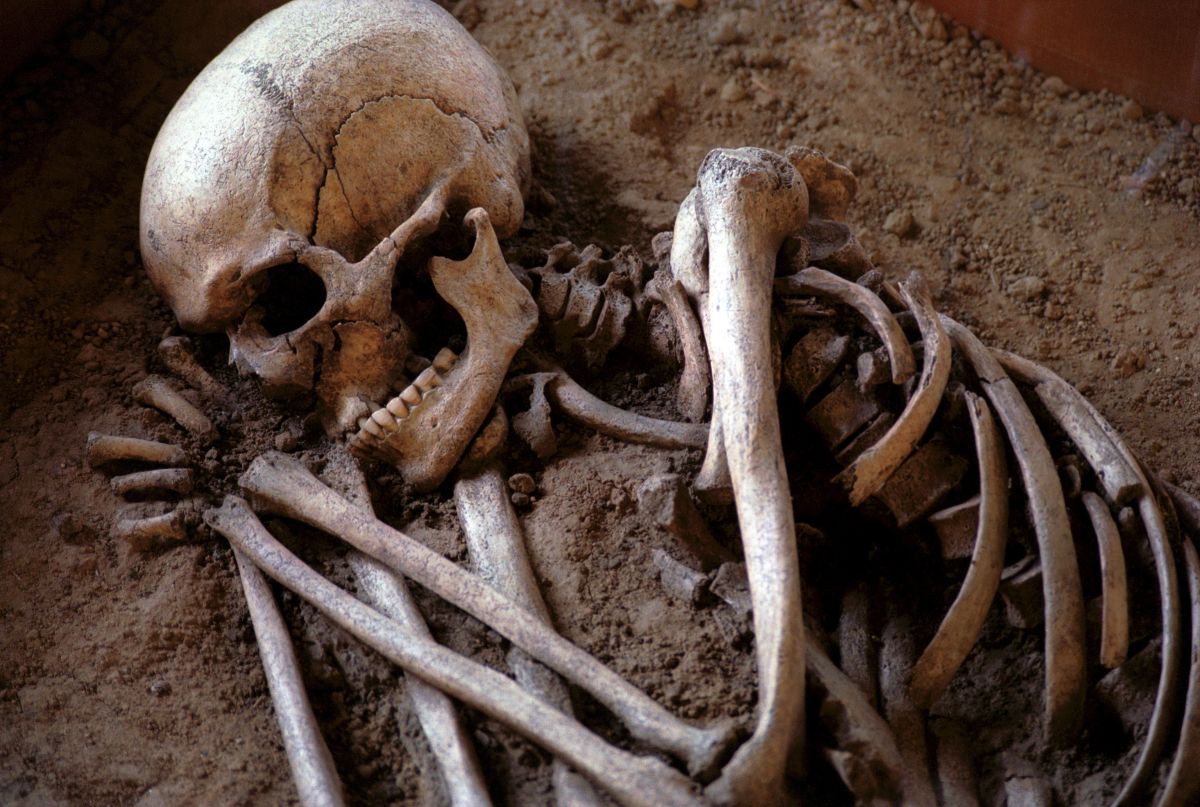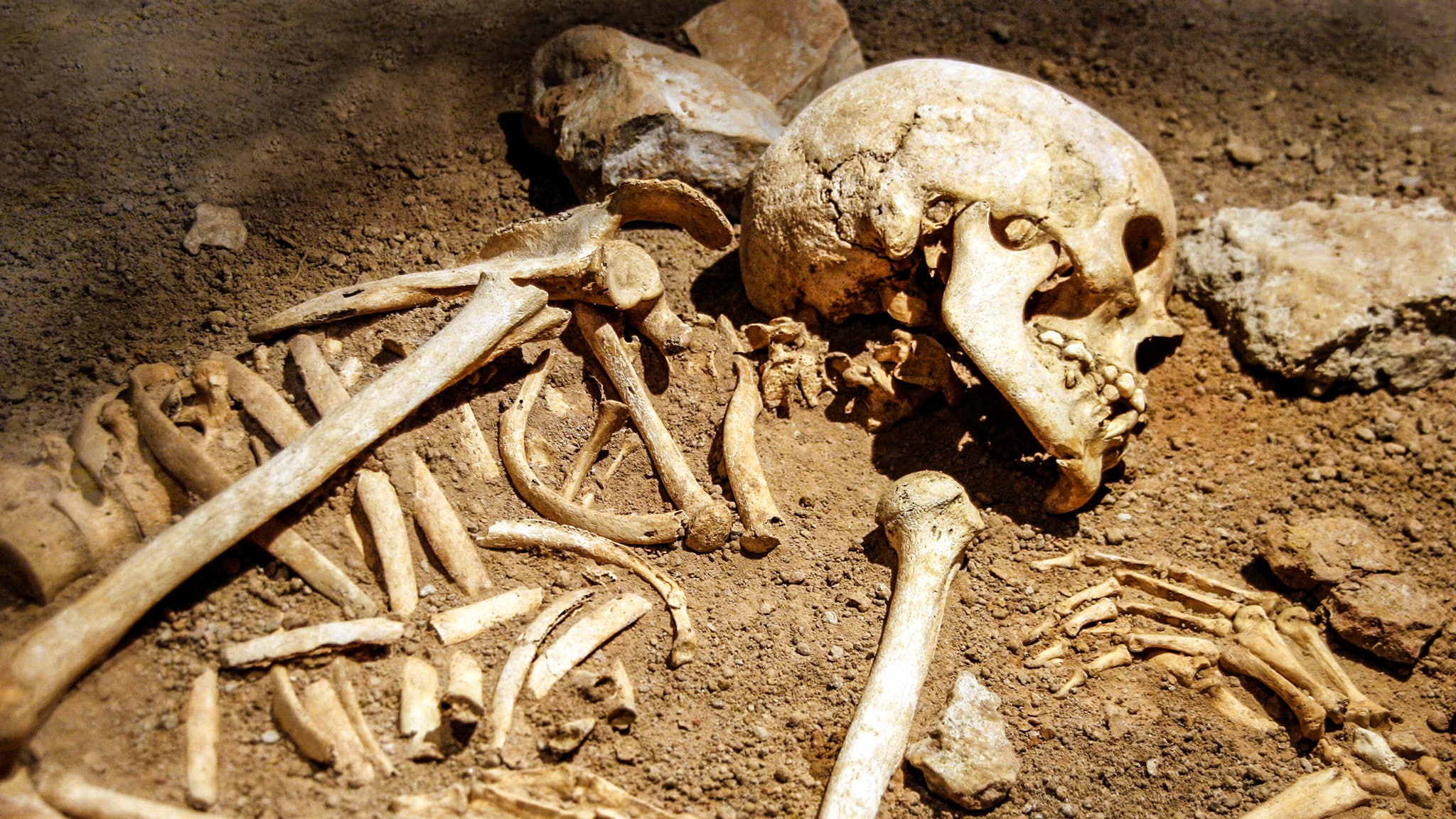The remains of a male individual, between the ages of 17 and 21, were intentionally deposited inside the Errotalde I cave, located in the municipality of Aintzioa-Loizu.
The skeleton is anatomically complete and exceptionally well preserved, according to experts. The body had been deposited face up, stretched out and with the arms on the stomach. The skull has a hole, apparently due to the impact of a projectile.


The position and the remains found have allowed us to conclude that the body would probably have been wrapped in a shroud or funerary bundle, covered with reddish sediments, apparently ocher. The remains have been preserved unaltered to this day.
A first radiocarbonometric analysis has dated the skeleton to 9,700 BC. C., in a time of transition between the Pleistocene (which goes from 2 million years ago to around 10,000 BC) and the Holocene (which begins around 10,000 BC and continues to the present day).
It is, therefore, the last hunter-gatherer societies in the Navarrese Pyrenees, and the ‘Loizu man’, as he has been called, is the oldest complete human remains found to date in Navarre. This circumstance makes the finding truly exceptional, not only in Navarre but also on a peninsular scale, since the anthropological record of this period is very scarce in Western Europe as a whole.

Furthermore, it is the oldest case of an archaeological phenomenon still insufficiently studied: the presence of complete human bodies inside karstic systems, sometimes in remote places with difficult access. In the Iberian Peninsula, the oldest cases are dated to the Mesolithic (from 10,000 BC to 6,000 BC), which means that they are after Errotalde I.
The ‘Loizu man’ was found almost 200 meters from the entrance of the cave, about 45 minutes away, in a fossil meander of a river within the labyrinthine system of the Errotalde I cave, after a long and narrow journey . The discovery was made on November 20, 2017. It was made by the group of speleologists Sakon, while they were carrying out speleological activities in the Errotalde I cave.

The cave, where the Loizu spring emerges, has been known in the area for a long time, but had not been explored in depth until then. The work that Sakon’s group was going to carry out in the cave required intense exploration work, since in addition to the topographic work, it included knowledge of the water system, the geomorphology of the cave, as well as biospeleological analyses.
The speleologists reported the finding to the General Directorate of Culture / Príncipe de Viana Institution. After two inspection visits, technicians from the Historical Heritage Service and specialists in physical anthropology confirmed the importance and relevance of the finding.
The work of study and extraction of the remains has been very complex. In fact, much of the journey to the place of the burial ground, after crossing the riverbed, had to be done crawling on the stomach, through corridors that barely fit one person, which made handling the equipment especially special. of recording. complex.
Sakon’s work has been fundamental in this task, facilitating and guaranteeing easy access to researchers at all times. Lifting up the remains has also been especially difficult, as some of the bones are partially carbonated and welded to the ground.
The entire process described above is being documented with professional photography and video, since the removal of the remains implies the “disturbance” of a context that has remained intact for more than 11,700 years.
The first tasks that have been carried out are those related to the safeguarding and protection of the find, ensuring the closure of the cavity.

The Government of Navarra, through the Department of Culture and Sports, together with the International Institute for Prehistoric Research of Cantabria, has formed a multidisciplinary team of specialists. In total, 26 people including speleologists, archaeologists, anthropologists, geologists, restorers and graphic record specialists, from different research centers in the European Union, who will be in charge of their research and study throughout this year.
The work that now begins takes over from the work started by the Sakon group and represents the completion of the field work.
Specifically, the exploration, topography, archaeological reconnaissance and geological characterization of all the new galleries that are being discovered and in which up to now no other archaeological remains have been found will continue.
One of the fundamental tasks in the cavity is to try to locate its primitive access since, for the moment, it is not believed that the individual entered through the current entrance, so the karstic system must have had another or other accesses that remain hidden today. .
In addition, a geomorphological study of the karst and its characteristics will be carried out. A photogrammetric survey of the skeleton will also be carried out, that is, a study of its shape, dimensions and position, based on measurements made from one or several photographs; as well as its georeferencing, its precise location through coordinates and specific data.
An in situ taphonomic study of the remains will also be carried out to analyze the fossilization process. All these procedures are key to understanding the cadaveric decomposition process in relation to funeral practice and the rituals used.
Once all the work described above has been completed and the body has been extracted, the laboratory work will begin, which basically consists of the cleaning and restoration/consolidation of all the skeletal remains; the osteological analysis of the individual to determine aspects such as age and cause of death, height and build, indicators of activity and diseases he may have suffered during his lifetime; dental microwear analysis, which will allow the reconstruction of the type of diet in the last stage of his life; biomolecular analysis, ranging from C14 dating to stable isotope analysis for the study of diets and analysis of strontium in dental enamel; paleogenomic analysis to try to reconstruct his genome; and archaeobotanical and geochemical analysis of the burial site.
After the recovery of the remains, whose extraction was completed this morning, they will be transferred to the International Institute of Prehistoric Research in Cantabria, where the necessary analyzes will be carried out. After this, the ‘Loizu man’ will return to Navarra to be permanently exhibited to the public under the custody of the Government of Navarra.





